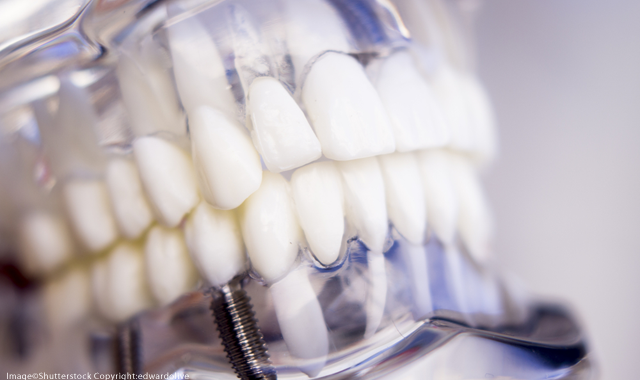How technology is making implants easier than ever
Technology is changing the way dentists look at implants - for the better.

Dr. John Flucke

Technology has affected nearly everything we do in dentistry and perhaps there are few disciplines greater affected than implants.
My most recent Technology Evangelist column deals with virtual treatment planning, but that is just one piece of the implant technology workflow that doctors are dealing with on a daily basis.
Even if you are not using virtual treatment planning, utilization of CBCT for implants is quickly approaching standard of care. When entering into a realm of restorative dentistry that does not regularly allow for direct visual access of the field, it pays off greatly to be able to be have as much information about the patient as possible in the preoperative phase. CBCT allows you to have total visualization of the target area prior to initiating the surgical phase and can aid tremendously in helping to prevent complications by letting the doctor have a total visual comprehension of the surgical site.
Technology has even gone so far as to permeate the surgical handpiece. The Bien-Air iChiropro is an implant placement motor that is powered by an iPad. The tablet operating system integrates with the motor and the app contains all the specifics of speed, torque, etc., that is required for ideal placement. Simply select the implant and all of the settings are changed. It also stores all of the information generated during the actual surgery for future reference. A smart doctor deserves a smart handpiece!
My practice partner, Dr. John Huebner, uses the iChiropro on every case and it has proven itself time and time again. We have more than one implant motor in the practice and as the office implant guru, he can use whatever he wants…. and he reaches for the iChiropro every time.
The market penetration of digital radiography is now over 50 percent and that means that doing “check” radiographs during placement is incredibly fast and easy. Want to make sure your angulation is spot-on when free handing an implant? In just a few seconds you have that valuable information and that peace of mind.
Once the implant is integrated and you are ready to restore, how about doing digital impressions instead of traditional? Digital impressions are faster, easier, and much more accurate. Rather than subject your patients to the miseries that come along with gooey and less than tasty impression materials, scan them digitally! Companies are now creating scan bodies that allow for digital scanners/acquisition units to create digital impressions that can then be sent to your laboratory of choice. This allows your office to receive the custom abutment and the final restoration for seating in a single patient appointment.
Oh, and if you think that’s all pretty cool, there are always folks working on ways to make things even better. On the not too distant horizon we will be seeing 3D printing enter into the equation. Imagine printing the implant, the custom abutment, and the implant retained prosthesis all in your office. Prosthetic hips have been printed and placed in Europe and, while still experimental, the technology looks promising. Printing for dentistry in many capacities is close… and it will change things.
If you are placing implants or if you want to, there has never been a better time in the history of our proud profession. There are many good training courses and technology can make this easier than ever before. It’s a bold new world. Enjoy it!